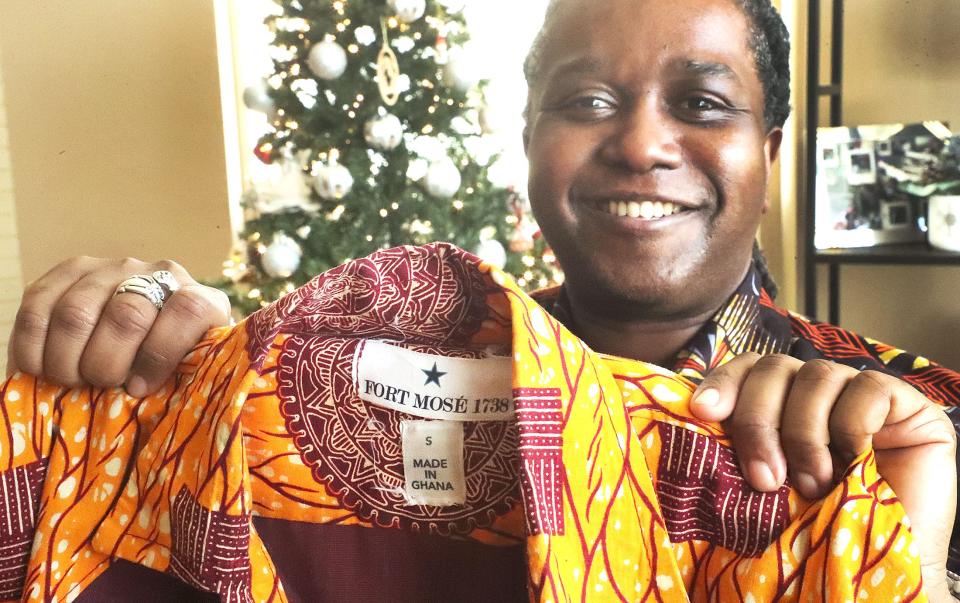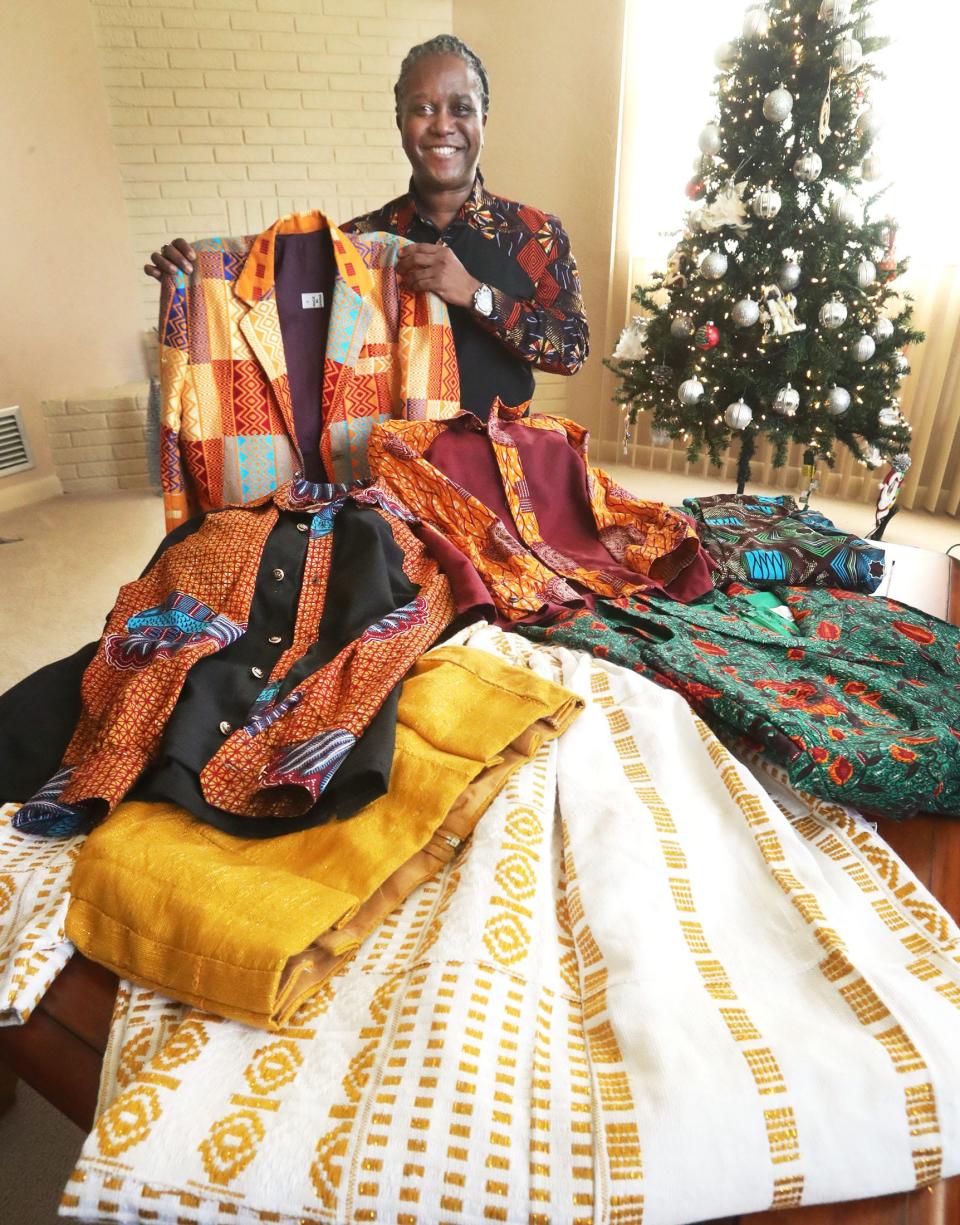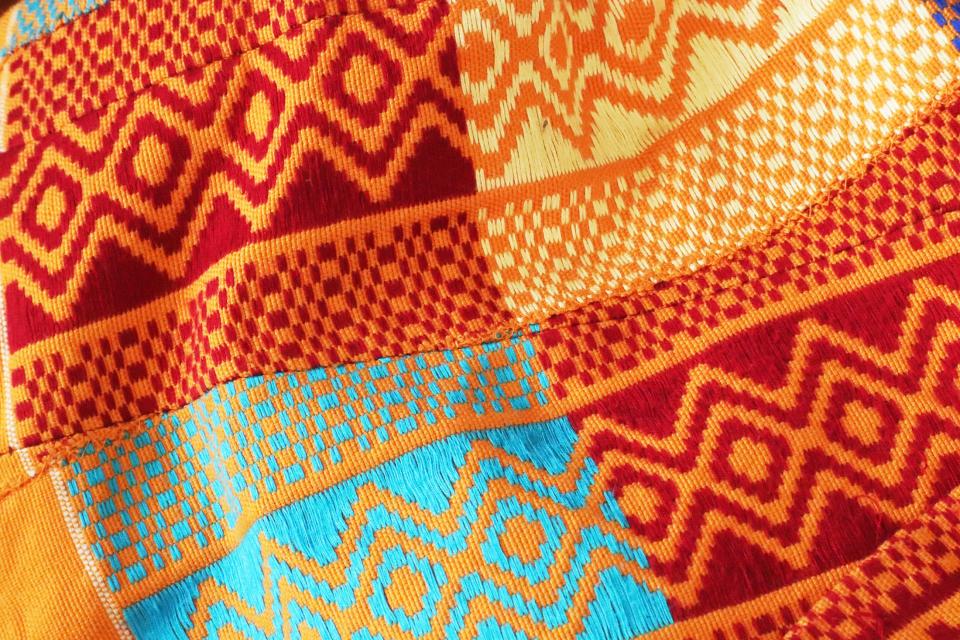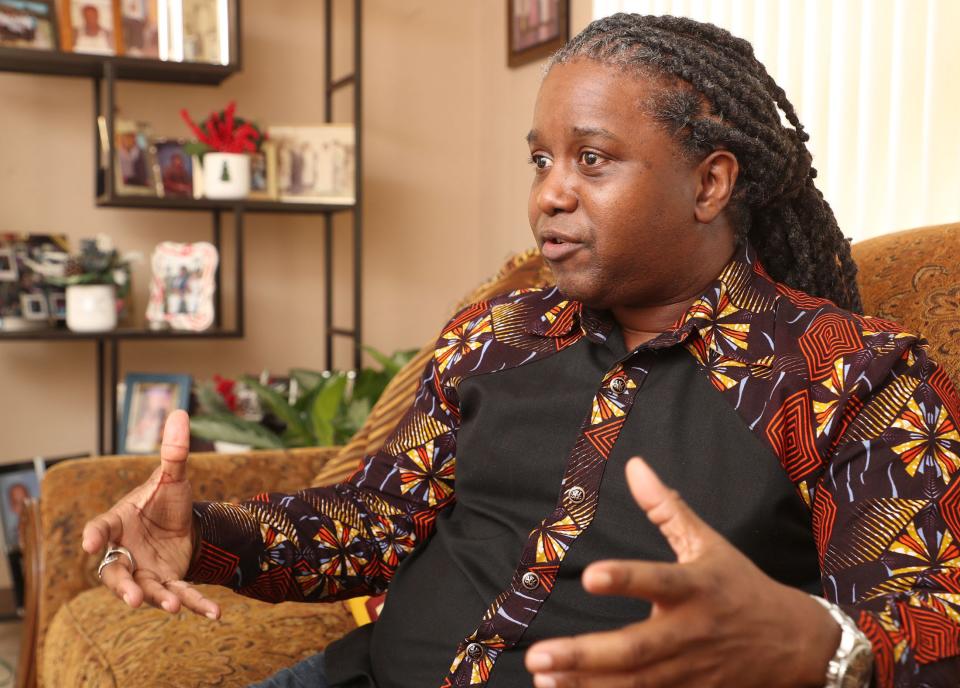'Shine a light': Daytona native mixes culture, commerce and history with fashion line
DAYTONA BEACH — With a doctorate in social work, Daytona Beach native Maurice Gattis never aspired to venture into the realm of fashion design, until a family vacation to West Africa opened the door to a business venture that ties together threads of commerce, culture and his academic pursuits.
Gattis, 45, has showcased his intricately designed Fort Mosé 1738 clothing line on the runway at two editions of DC Fashion Week, an influential semi-annual industry gathering in Washington, D.C.
The brand is named after the historic site of the first free Black community in the United States, founded in 1738 in St. Augustine for formerly enslaved people from West Africa and elsewhere on that continent.

“The mindset is to shine a light,” said Gattis, surrounded by samples of the clothing in the den of his childhood home in Daytona Beach, not far from where he once attended classes at Westside Elementary School. “There are tremendous artists in Ghana doing art, clothing, textile work. I want to expand knowledge about that to a broader audience in the United States.”
Chance meeting yielded unexpected opportunity
Fort Mosé 1738 LLC is a business partnership between Gattis and a couple, Nathaniel and Faustina, that he and his mother happened to meet on a 10-day vacation to Ghana in 2021.
“I put my hand out to hail a taxi and Nathaniel was the driver,” said Gattis, who declined provide the couple’s last name out of privacy concerns. “He became our driver while we were there, and we told him how much we loved the clothing. He said, ‘Oh, my wife makes clothes.’”
Gattis bought items from the couple during the visit and stayed in touch afterward.

When the couple suggested starting a company, a partnership was forged. Gattis creates the designs and the couple produces items in exchange for profits from the sales.
“It’s a way of supporting a small business in Ghana and introducing it to a larger market in the United States,” he said.
Fort Mosé 1738 is a growing collection that boasts nearly two dozen tops, skirts, jumpsuits, hats, dresses, bags, blazers, pants and a variety of shirts at the company’s online store, fortmose1738.com.
After considering potential company names that focused on the clothing’s vibrant colors and geometric designs, Gattis settled on Fort Mose (pronounced “Moh- say”) as a more meaningful nod to the cultural connections that he hopes the clothing might create.
“It’s about how do you bridge the gap between Ghana and the United States, recognizing that there was once a traveling slave trade,” said Gattis, who only became aware of Fort Mose a few years ago despite living in Daytona Beach from birth until his 1996 graduation from Mainland High School.
“I was not even vaguely aware of it,” he said, incredulous now about that gap in his historical knowledge. “It was eye-opening that I was born and raised here, less than an hour from the first Black community, and I had never been exposed to it.”
He’s hoping that the company’s designs might lead to that exposure for others, he said.
“That’s another part of the line, an educational component, even in the naming of it.”
For Gattis, business dovetails with academic work
The clothing is created from handwoven fabrics made of cotton or silk/cotton blends. The traditional Kente designs employ saturated shades of color into rows of patterns that can represent wisdom of a proverb or even a political statement.
Aside from such connotations, the designs are exceedingly intricate and beautiful, said Tracy Sprolden, a Washington, D.C.-based model who became an ambassador for the line and an informal company adviser after wearing the clothing in several fashion shows.

“The material feels amazing, the colors are amazing,” she said. “I haven’t seen anything like this.”
Sprolden, who also works as a statistician for the U.S. Census Bureau, is a big fan of the intricate lines that form the traditional Kente designs.
“I’m a math person, so I’m drawn a lot to the geometry of it,” she said. “A lot of it is repetitive patterns and colors, and, to me, that’s fascinating. The human eye is drawn to these types of patterns, the symmetry and shapes in the clothing. Maybe it’s not something you’d wear, but you’re still drawn to it.”
In Ghana, the couple makes the clothes on a hand-crank sewing machine, weaving together spools of thread in a process that’s remarkably efficient, Gattis said.
“It doesn’t roll down an assembly line, but they can make a shirt in 24 hours,” he said. “They are just really skilled, and I think it’s important to highlight how very skilled they are.”
For Gattis, a small business that is introducing the couple’s handiwork to a broader audience represents a real-life example of empowerment that dovetails with the themes of his academic work.
At VCU, he focuses his research on health, social and economic disparities among lesbian, gay, bisexual and transgender (LGBTQ+) populations, as well as issues affecting homelessness and adolescent risk behaviors in the United States, South Africa and Canada.

Opportunities to harness interests and skills in productive ways is a key element of success that extends to those populations and beyond, he said.
“In my classes, we talk about empowerment perspective, and this is empowerment in practice,” he said. “It’s about how do you take people’s skills and incorporate them into something that’s going to benefit their lives, to showcase their work in ways that can support them financially.”
This article originally appeared on The Daytona Beach News-Journal: Daytona native mixes culture and commerce in Fort Mose 1738 fashions

